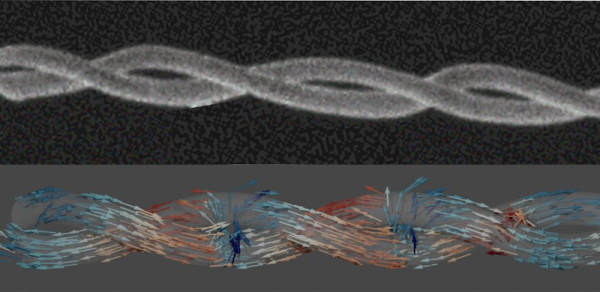You normally associate a double helix with DNA, but an international team headquartered at Cambridge University used 3D printing to create magnetic double helixes that are about a 1,000 times smaller than a human hair. Why do such a thing? We aren’t sure why they started, but they were able to find nanoscale topological features in the magnetic field and they think it will change how magnetic devices work in the future — especially magnetic storage devices.
In particular, researchers feel this is a step towards practical “racetrack” memory that stores magnetic information in three dimensions instead of two and offer high density and RAM-like access times. You can read the full paper if you want the gory details.












